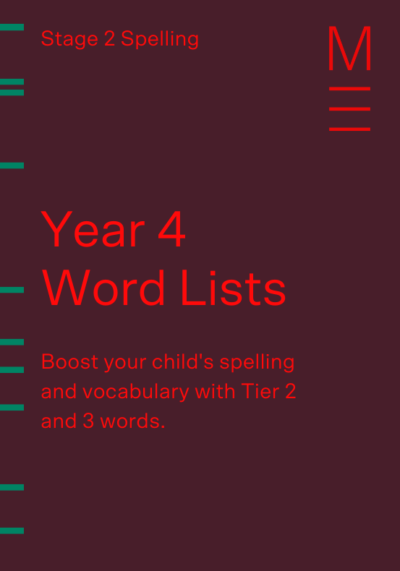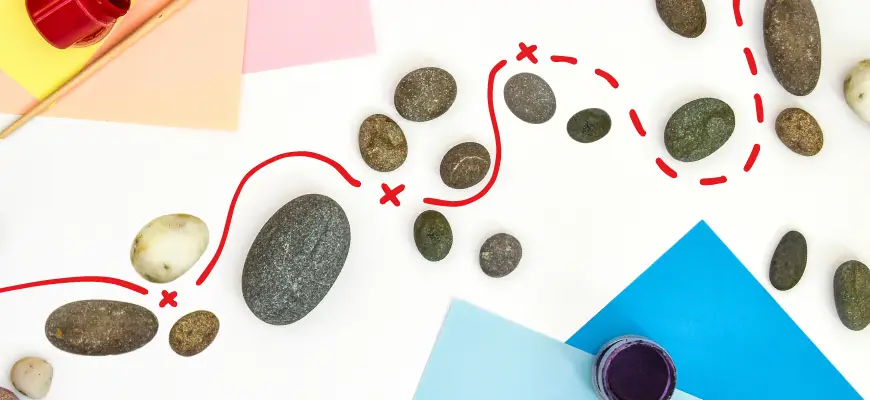Welcome to Matrix Education
To ensure we are showing you the most relevant content, please select your location below.
Select a year to see courses
Learn online or on-campus during the term or school holidays
Learn online or on-campus during the term or school holidays
Learn online or on-campus during the term or school holidays
Learn online or on-campus during the term or school holidays
Learn online or on-campus during the term or school holidays
Learn online or on-campus during the term or school holidays
Learn online or on-campus during the term or school holidays
Get HSC exam ready in just a week
Select a year to see available courses
Science guides to help you get ahead
Science guides to help you get ahead
When it comes to spelling skills, Year 4 is a critical stage of your child’s literacy development. As their vocabulary expands, your child will be exposed to unfamiliar and complex words, often called Tier 2 and 3 words. Accordingly, “sounding out” and rote learning spelling words will no longer be sufficient. Instead, your child will need to rely on their knowledge of common prefixes, suffixes, and homonyms, as well as more complex spelling rules.
So, how can you ensure your child’s spelling is up to scratch? Well, you’ve come to the right place. Join us as we explore the developmental milestones and the best learning strategies for Year 4 spelling students. Otherwise, simply download our free “Year 4 Spelling Words Australia” Word List below and kick start your child’s learning journey today!
Boost your child's spelling and vocabulary with Tier 2 and 3 words. Fill out your details below to get this resource emailed to you. "*" indicates required fields
Download your Year 4 Spelling Word List

Download your Year 4 Spelling Word List
Although it can be tempting to type “Year 4 Spelling Words Australia” into Google and download the first free word list you see, spelling mastery at this stage is a little more complex. For one, the NSW and Victorian curriculum outline a number of very specific learning outcomes that are expected of Year 4 students. So let’s take a quick look at what these literacy requirements are, so you as a caregiver can make informed choices about your child’s language development!
In Year 4, students are expected to have a good understanding of morphemes. Morphemes are crucial for spelling word construction, as they are the building blocks that make up all words (e.g. the word unhappiness is made up of three morphemes: the prefix “un”, the base word “happy”, and the suffix “ness”). Year 4 students should be able to recognise the morphemes of known words, as well break down unfamiliar words into their morphemes in order to discern their meaning.
By Year 4, students are expected to have developed a strong level of phonological and phonemic awareness. In other words, your child should be able to understand the sound structure of words. This involves understanding the individual sound each letter or syllable in a word makes, and being able to string them together to produce a complete and accurate pronunciation. It also includes being able to recognise sound-based relationships between words – things like rhyme and alliteration.
Year 4 introduces students to many complex spelling rules. This includes the magic “e” rule, whereby a silent “e” at the end of the word changes the whole word’s pronunciation (e.g. “pin” vs “pine”), doubling consonants (e.g. “run” to “running”), and the use of prefixes and suffixes (e.g. “happy” to “unhappiness”). Recognising these patterns helps Year 4 students spell words accurately.
In Year 4, spelling students are expected to develop a mastery of various homonyms, words that are spelled and/or pronounced the same, but have different meanings (e.g. “their” vs. “there” vs. “they’re”). Being able to differentiate between homonyms is crucial for spelling proficiency, as homonyms are one of the leading causes of English mistakes among Year 4 students. For more information on how your child can master common Year 4 homonyms, visit our guide here!
Year 4 is a period of substantial vocabulary growth. As children read more extensively, they will encounter a diverse range of words, some of which they may have never heard of before. These include Tier 2 words, or words with multiple meanings, and Tier 3 words, complex words that have a context-specific application. For more information on how your child can master Tier 2 and 3 spelling, visit our guide here!

Upon review, the sheer breadth and complexity of the Year 4 spelling requirements listed above can appear overwhelming. The good news, however, is that there are plenty of very simply things you can be doing as a caregiver to support your child in these areas! So what are they? Well, let’s take a look.
Reading is the cornerstone of spelling development. Encouraging your child to read widely is the absolute best thing you can be doing to improve their spelling and overall literacy. From comics to chapter books, encourage your child to pursue their interests in the books they read, even if it means buying them their 14th graphic novel about dinosaurs.
If you’d like to ensure your child is reading for meaning, visit our guide on how to nurture their love of books here! Or, if you’re just looking for the perfect book to kick start your child’s literacy career, check out our list of the Top 10 Books for Year 4 Spelling Students.
In this well-loved spelling tradition, every single day, you nominate one new and unfamiliar word as your “word of the day”. It is then the responsibility of all participants to learn the meaning, spelling, and pronunciation of the word.
There are two popular ways you can source your “word of the day”. The first is the organic approach: simply go about your day as usual, and wait until you or your child come across an unfamiliar and interesting word (trust me: whether it’s in a book, a TV show, or a conversation, you’ll run into one!). The other approach is to use a website like Merriam Webster, Dictionary.com, or The New York Times, all of whom nominate their own official “word of the day”. These words are then published on their respective websites daily! This tradition is incredibly fun, interactive, and best of all, great for expanding your child’s vocabulary.

As seen above, one of the best ways to nurture your child’s Year 4 spelling literacy at home is through an interpersonal approach. And, despite the stigma that exists around learning through play, games are a great English learning tool!
Engaging in word-based activities, puzzles, and crosswords makes spelling practice enjoyable and interactive. Games like Scrabble, Boggle, Bananagrams, and word searches are excellent options to reinforce your child’s Year 4 spelling skills.
While word lists and other supplementary materials have their place, there is a reason they appear last on this list. One word list per week can be excellent for developing your child’s Year 4 spelling literacy, but they can be, well… boring. Your child already does plenty of written exercises at school, and to maintain their enthusiasm for learning, it is important they don’t feel overwhelmed or overworked.
Where you can, try to make your child’s word lists interactive (instructions for how to do this can be found here). Moreover, make sure word lists, worksheets, and exercise books are treated only as supplemental resources. Outside of school, reading, conversing, and yes, playing, should remain the most crucial arrows in your child’s spelling quiver!
As you implement the learning strategies above, there are just a few things worth keeping in mind. Research has shown that encouraging a “growth mindset” leads to greater confidence and academic improvement in children. To nurture a growth mindset in your child, ensure they see mistakes as opportunities for growth. Moreover, reward the time and effort they put into their learning, not their results.
Finally, it is important to acknowledge that spelling development is a gradual process. For parents who hope to be a positive part of their child’s Year 4 literacy journey, patience and unconditional support are a must.
© Matrix Education and www.matrix.edu.au, 2023. Unauthorised use and/or duplication of this material without express and written permission from this site’s author and/or owner is strictly prohibited. Excerpts and links may be used, provided that full and clear credit is given to Matrix Education and www.matrix.edu.au with appropriate and specific direction to the original content.